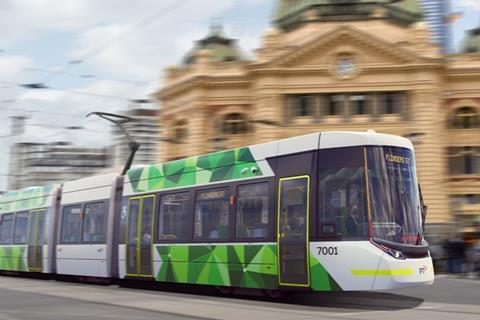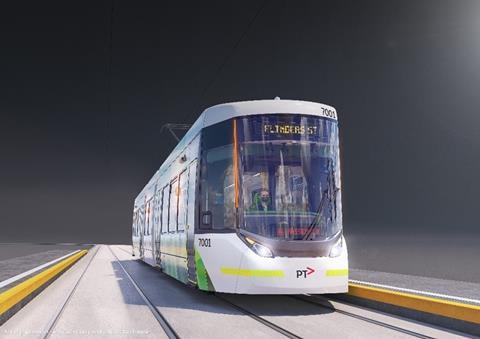
AUSTRALIA: Victoria’s Department of Transport has awarded Alstom a €700m framework contract to supply 100 G Class customised Flexity 2 trams to Melbourne from 2025.
The agreement announced on April 21 includes 15 years of maintenance, which Alstom said would make it ’the biggest tram contract in Australia and in the southern hemisphere’.

The low-floor trams will provide an increase in capacity to handle predicted population growth, and will improve accessibility by enabling the retirement of all existing high-floor trams by 2032.
The order forms part of Victoria’s A$1·85bn Next Generation Trams Project, which will also include a purpose-built maintenance and stabling facility at Maidstone in western Melbourne.
Next Generation Trams
The Flexity 2 tram design passed to Alstom with its acquisition of Bombardier Transportation, and it has been adapted to Melbourne’s specifications to provide ‘seamless integration’ into the network without the need for infrastructure, traction power or signalling works.
The design has been informed by experience with the High Capacity Metro Trains and E Class tram procurements. Initial proposals will now be refined in consultation with representatives of passengers, accessibility groups and tram drivers, before being finalised in 2023.

The basic design is for a three-section 25 m long vehicle with three bogies and a capacity of up to 150 passengers. This could be extended to 35 m with four bogies to provide additional capacity.
The front end is designed to enhance driver sightlines and provide good collision protection, and the trams will be equipped with a driver obstacle detection assistance system

Passenger facilities will include a street-boarding wheelchair lift, multi-purpose areas for pushchairs, bicycles and wheelchairs, air-conditioning ‘suited to Melbourne’s unique weather’, and a ‘noise-optimised’ design providing a quiet interior.
Onboard energy storage and regenerative braking will reduce energy consumption per passenger by 30% to 40% compared to an E Class tram, and limit the peak current draw to reduce the need for power supply enhancements.
Crucial transport mode in Melbourne
The contract specifies 65% local content, an increase from Victoria’s usual 50% requirement for rolling stock contracts.
Work to set up the production line at Alstom’s Dandenong site is to begin imminently, with assembly of the first tram to start in 2023 for entry into service from 2025. The maintenance contract includes 85% local content.

‘Victoria’s rolling stock industry is the envy of the nation and this project will support up to 1 900 local jobs throughout the supply chain’, said Minister for Public Transport Ben Carroll.
‘Trams are a crucial transport mode in Melbourne’, said Mark Coxon, Managing Director of Alstom Australia & New Zealand. ‘The local delivery of this project will provide an all-inclusive experience for commuters while securing the manufacturing future and supply chains of one of Australia’s longest-standing rolling stock manufacturing hubs at Dandenong for the next decade, confirming Victoria as the leading railway manufacturing state in Australia.’








